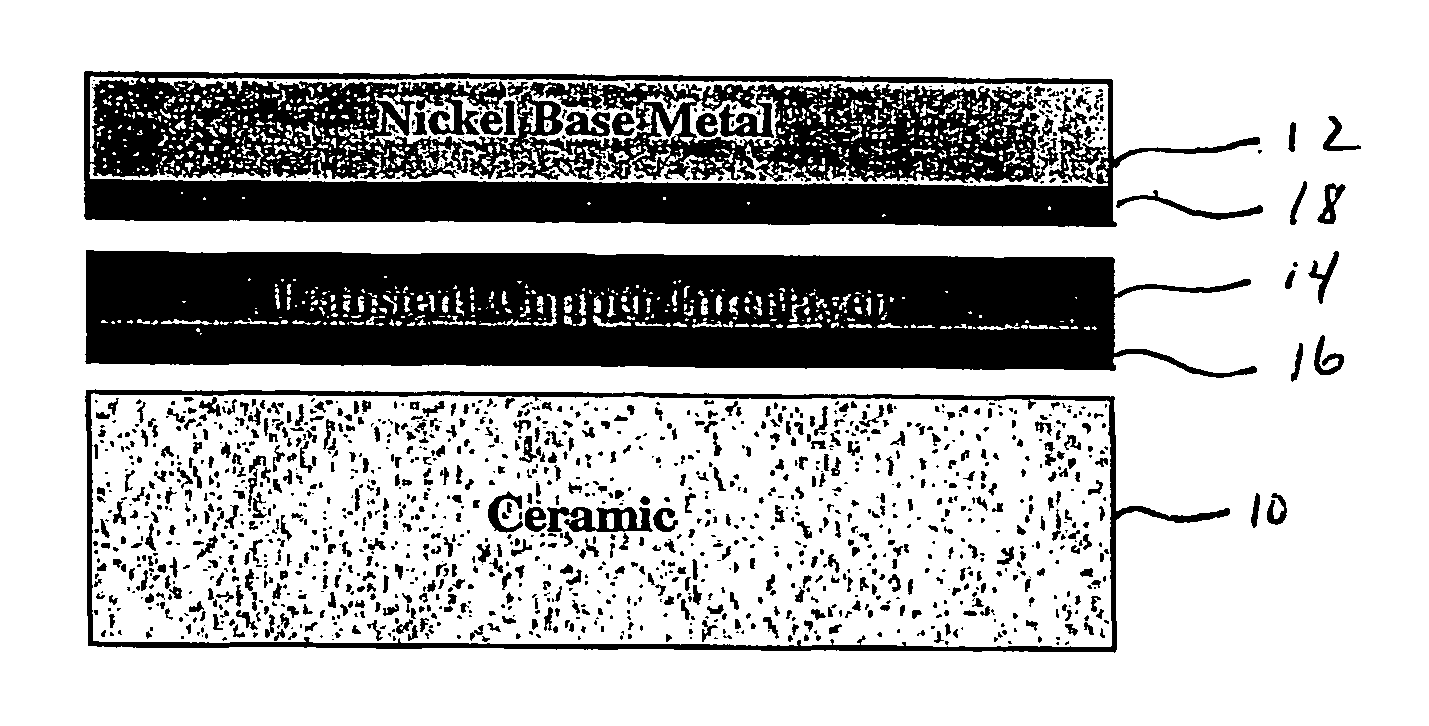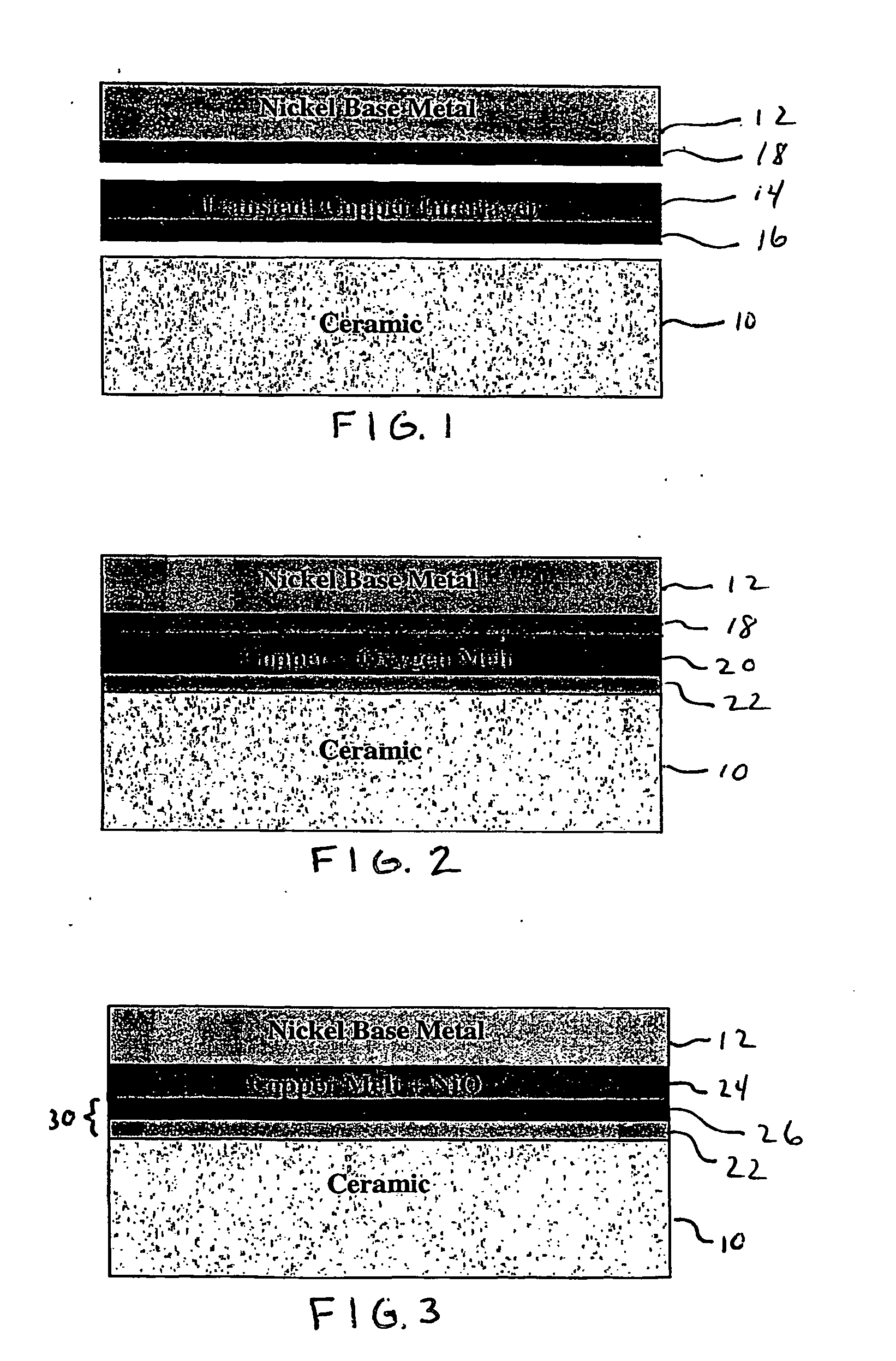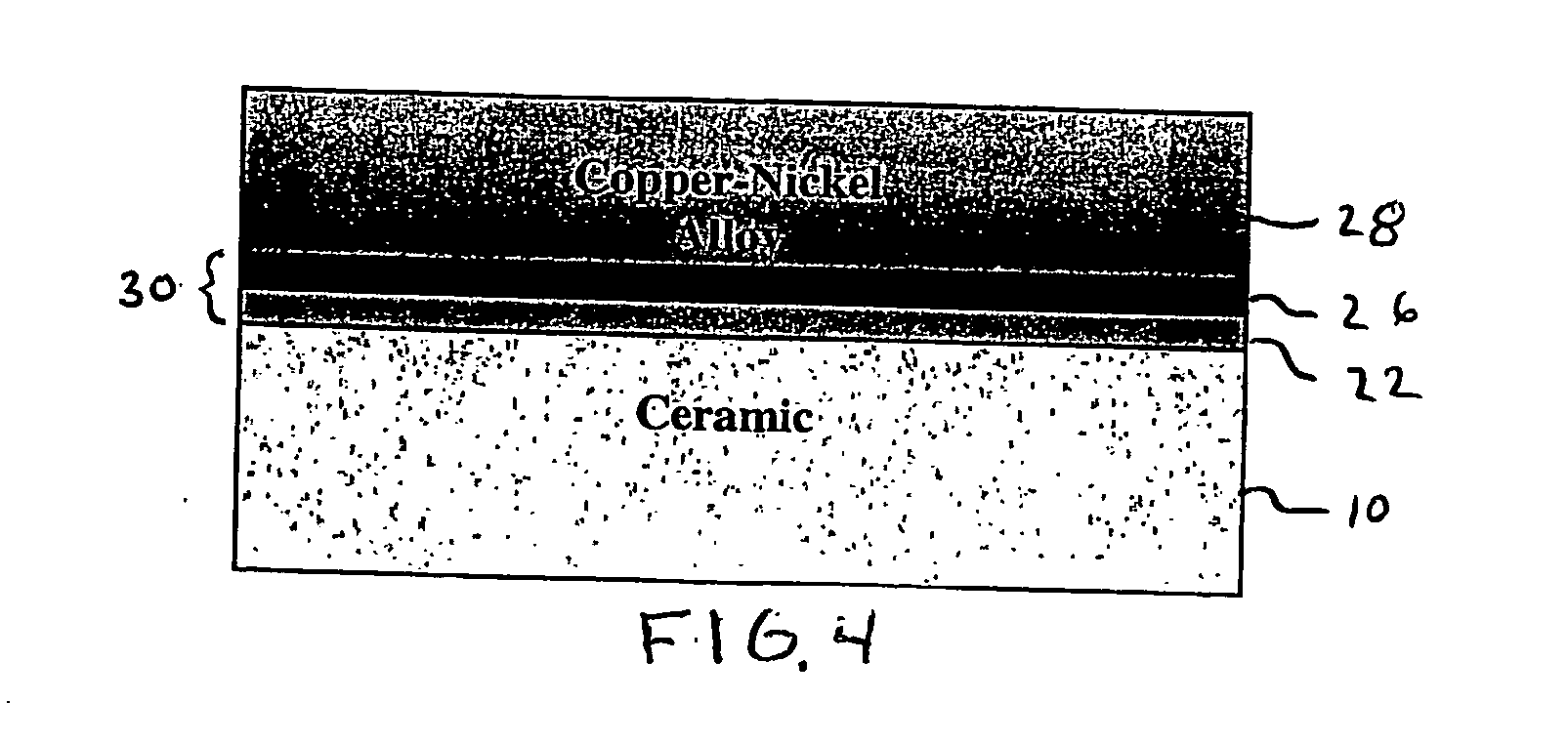Transient eutectic phase process for ceramic-metal bonding metallization and compositing
a technology of eutectic phase and ceramic metal, which is applied in the direction of welding/cutting media/materials, manufacturing tools, and solvents, etc., can solve the problems of not being able to withstand high temperatures or corrosion, not having all of the material properties, and unable to achieve the effect of less refractory
- Summary
- Abstract
- Description
- Claims
- Application Information
AI Technical Summary
Benefits of technology
Problems solved by technology
Method used
Image
Examples
Embodiment Construction
[0007] The present invention is a method of directly joining or bonding ceramics and metals (the terms “metal” and “metallic” being used herein to encompass metals, metal alloys, intermetallics, materials containing a substantial amount of metallically bonded materials, and any combination or combinations thereof) using a transient, low-temperature, metallic-material-based eutectic liquid or melt, i.e., where the metallic-material-based eutectic liquid “disappears” via solidification into a desired alloy or other metallically bonded material. To be consistent with current terminology and the illustrative embodiment to be described further on, the metallic-material-based eutectic liquid or melt will also be referred to hereinafter as “gas-metal eutectic.” It should be understood, however, that the eutectic constituents may also be provided by a liquid or solid in contact with an interlayer formed of a metallic material (metallic interlayer). The transient, low-temperature, metallic-m...
PUM
| Property | Measurement | Unit |
|---|---|---|
| eutectic melting temperature | aaaaa | aaaaa |
| melting point | aaaaa | aaaaa |
| melting temperature | aaaaa | aaaaa |
Abstract
Description
Claims
Application Information
 Login to View More
Login to View More - R&D
- Intellectual Property
- Life Sciences
- Materials
- Tech Scout
- Unparalleled Data Quality
- Higher Quality Content
- 60% Fewer Hallucinations
Browse by: Latest US Patents, China's latest patents, Technical Efficacy Thesaurus, Application Domain, Technology Topic, Popular Technical Reports.
© 2025 PatSnap. All rights reserved.Legal|Privacy policy|Modern Slavery Act Transparency Statement|Sitemap|About US| Contact US: help@patsnap.com



